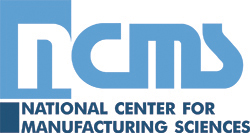Historical Articles
March, 1952 issue of Plating
Sheep Not of This FoldTHE PLATER when he is harassed by troubles often asks himself why he ever chose the plating industry for his life’s work; certainly, in no other industry does one have such difficulties. To a certain extent he is right: The particular combination of requirements that pertain to electroplated coatings are not found in any other industry. Many of his problems, however, are encountered by the electrorefiners and electrowinners, who also do plating in the broadest sense of that word.
Many platers do not recognize how big the electrorefining and electrowinning industries are. Large portions of the copper, the high-purity zinc, the pure lead and the nickel, as well as many other metals, are produced by electrolytic means. Thus the total tonnage deposited by electrorefiners and electrowinners exceeds very greatly that deposited by electroplaters.
That the problems of the platers and of the electrorefiners are very similar was brought out at the two day symposium on addition agents in extractive metallurgy held at the meeting of the American Institute of Mining and Metallurgical Engineers on February 20 and 21 in New York City.
Two points in particular impressed this writer. First, the refiner deposits on his cathode sheets what to the (later are exceedingly heavy coatings. And he does 80 under very unfavorable conditions. His anode-to-cathode distances are low, of the order of 1 inch, to the end that the cell voltage and thereby the all important cost of current be held to a minimum. Even when soluble anodes of very high impurity content are used, as in most copper refining, the refiner cannot afford to make room for anode bags or diaphragms that would keep the sludge away from the cathodes. Nevertheless, the electrorefiner’s heavy deposits are often very smooth and uniform. One contributing factor is the low cathode current density he employs, perhaps one-third of what a plater would use in the same solution for much thinner deposits.
Second, the refiner produces metal of very high purity. For that purpose he purifies his solutions by chemical and physical (absorptive) means which frequently differ from those of the electroplater. He also relies to some extent on his addition agents to shift the cathode potentials in a direction unfavorable to the codeposition of impurities. In this respect he is assisted by the absence of deep recesses on his cathodes, whereas the plater has to contend with preferential deposition of impurities in such areas. But unlike the plater, the refiner watches the cost of addition agents very carefully, and limits himself to the use of such low-cost materials as animal glue and wastes from the chemical industry.
The plater, especially if he deposits thick coatings, has learned from the electrotyper. He would also do well to include in his thinking some of the ideas of the electrorefiner and electrowinner, sheep of another fold of electrodeposition.
Gustaf Soderberg
 |
 |
 |
 |
 |
| Home | Subscribe | Regulations | Compliance Assistance | News | Resources | Resource Locators | Directories | Online Training | About | Search | NASF.org |
The information contained in this site is provided for your review and convenience. It
is not intended to provide legal advice with respect to any federal, state, or local regulation.
You should consult with legal counsel and appropriate authorities before interpreting any
regulations or undertaking any specific course of action.
Please note that many of the regulatory discussions on STERC refer to federal
regulations. In many cases, states or local governments have promulgated relevant rules and
standards
that are different and/or more stringent than the federal regulations. Therefore, to assure full
compliance, you should investigate and comply with all applicable federal, state and local
regulations.

